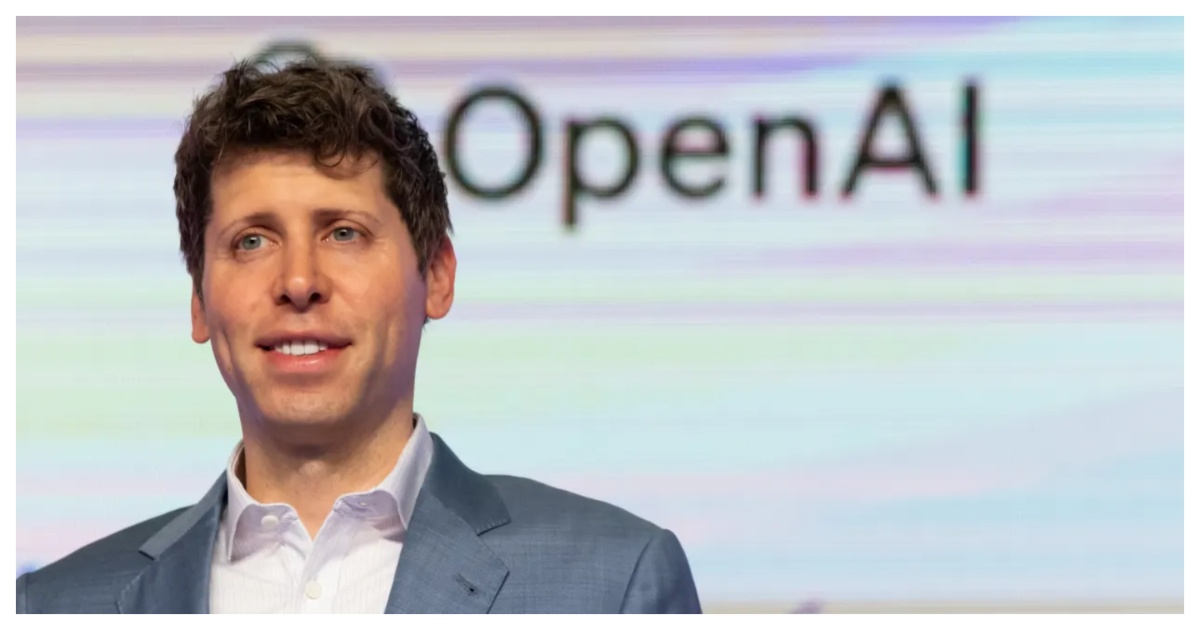ChatGPT is now the fifth-most visited website in the world, but just a few years ago, it was a relatively obscure research lab that few people had heard of.
OpenAI CEO Sam Altman recently offered a candid look into the “accidental history” of how the research-focused organization evolved into a product powerhouse, culminating in ChatGPT, a platform now used by over 500 million people weekly. Altman’s remarks shed light on the iterative, and at times uncertain, path from foundational research to a globally impactful consumer application.

The journey, as Altman describes it, wasn’t a straight line to ChatGPT. “The first consumer product was not ChatGPT. It was DALL-E,” Altman said, referring to OpenAI’s image generator. Before that, the initial commercial offering was an API, which allowed other developers to remotely access ChatGPT’s model through a programming interface. “The first “product” was the API,” Altman said.
Altman recounted OpenAI’s earlier exploratory phases. “We had a few directions that we really wanted to bet on. Eventually, we said, we gotta build a system to see if it’s working. And we’re not just writing research papers. So we’re gonna see if we can play a video game well. We’re gonna see if we can do a robot hand. We’re gonna see if we can do a few other things.”
Within this environment of experimentation, a specific focus began to emerge. “At some point in there, one person initially, and then eventually a team got excited about trying to do unsupervised learning and to build language models. And that led to GPT-1 and then GPT-2.”
By the time GPT-3 was developed, OpenAI recognized its potential but faced a dual challenge. “By the time of GPT-3, we both thought we had something that was kind of cool, but we couldn’t figure out what to do with it,” Altman admitted. “And also we realized we needed a lot more money to keep scaling. We had done GPT-3, we wanted to go to GPT-4. We were heading into the world of billion-dollar models. It’s hard to do those as a pure science experiment unless you’re like a particle accelerator or something. Even then it’s hard.”
This necessity spurred a shift in thinking. “So we started thinking, okay, we both need to figure out how this can become a business that can sustain the investment that it requires. And also, we have a sense that this is heading towards something actually useful.” Previous attempts to merely release model weights, as with GPT-2, hadn’t generated significant traction. “We had put GPT-2 out as model weights and not that much had happened,” Altman said.
The decision to launch an API stemmed from key observations. “One of the things that I had just observed about companies’ products in general is if you do an API, it usually works somehow on the upside,” Altman explained. “Also, if you make something much easier to use, there’s usually a huge benefit to that. So we were like, well, it’s kind of hard to run these models that are getting big. We’ll go write some software and do a really good job of running them. And then rather than build a product — ’cause we couldn’t figure out what to build — we will hope that somebody else finds something to build.”
The GPT-3 API launched around June 2020. Its reception was initially niche. “We put out GPT-3 in the API and the world didn’t care, but Silicon Valley did. They’re like, oh, this is kind of cool. This is pointing at something,” Altman recalled. While widespread adoption wasn’t immediate, certain use cases emerged. “The only people that built real businesses with the GPT-3 API that I can remember were a few companies that did like copywriting as a service. That was kind of the only thing GPT-3 was over the economic threshold on.”
However, a crucial insight came from observing user interaction. “But one thing we did notice, which eventually led to ChatGPT, is even though people couldn’t build a lot of great businesses with the GPT-3 API, people loved to talk to it in the Playground,” Altman highlighted. “And it was terrible at chat. We had not, at that point, figured out how to do RLHF [Reinforcement Learning from Human Feedback] to make it easy to chat with, but people loved to do it anyway. That was the kind of only killer use other than copywriting of the API product. That led us to eventually build ChatGPT.”
This observation solidified their direction. “By the time ChatGPT came out, there were maybe like eight categories instead of one category where you could build a business with the API. But our conviction that people just wanna talk to the model had gotten really strong.”
Before ChatGPT, DALL-E had launched and was “doing okay.” But the desire to create a dedicated conversational product was clear. “We knew we kind of wanted to build, especially along with the fine-tuning we were able to do, we knew we wanted to build this product that let you talk to the model.”
ChatGPT launched on November 13th, 2022. “There was a lot of work leading up to that,” Altman noted. The impact was immediate and profound. “Today it has over 500 million people who talk to it on a weekly basis.” This milestone, achieved roughly six years after the initial focus on large language models began to take shape, was the culmination of a journey of research, strategic pivots, and keen observation of user behavior that transformed OpenAI from a small research-focused lab into a global product leader.
